Abstract
The metabolic states and the uptake and metabolism of [1-13C]glucose, [2-13C]glycine, and [15N]glycine in intact Nicotiana tabacum L. (cv Xanthi) mesophyll protoplasts were measured by 13C and 15N nuclear magnetic resonance spectroscopy. Changes in the concentration of metabolites during the first two days of culture in darkness were followed. Protoplasts isolated in 0.55 molar mannitol medium showed a drop in the concentration of all the intracellular metabolites during the first 28 hours of culture. Uptake of glucose and synthesis of glucose-derived metabolites were observed, indicating activity of glycolysis and the tricarboxylic acid cycle. Addition of glycine caused the accumulation of serine in dark cultured protoplasts, via the photorespiratory pathway. Glutamate dehydrogenase and glutamine synthetase activities in photorespiratory NH4+ assimilation were observed. Glucose uptake and metabolism and cell division were inhibited by 3 millimolar glycine, suggesting that the accumulating serine or the release of ammonia during serine synthesis had toxic effects in this system.
Full text
PDF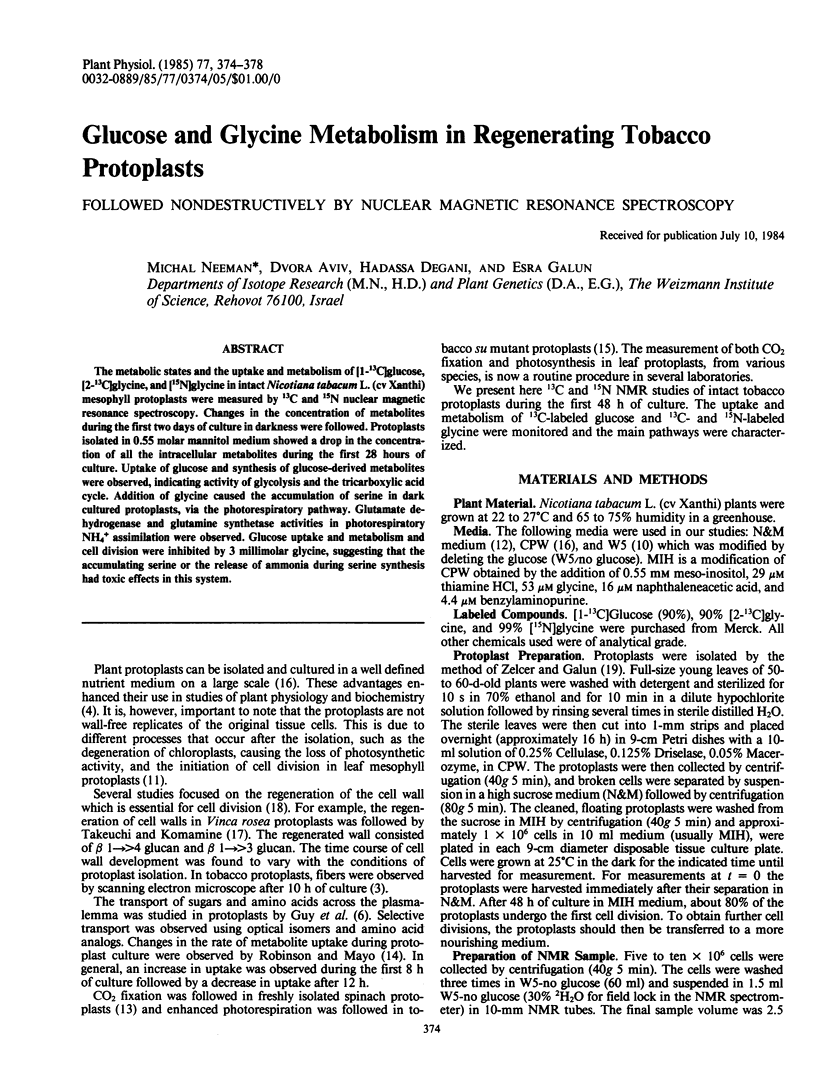
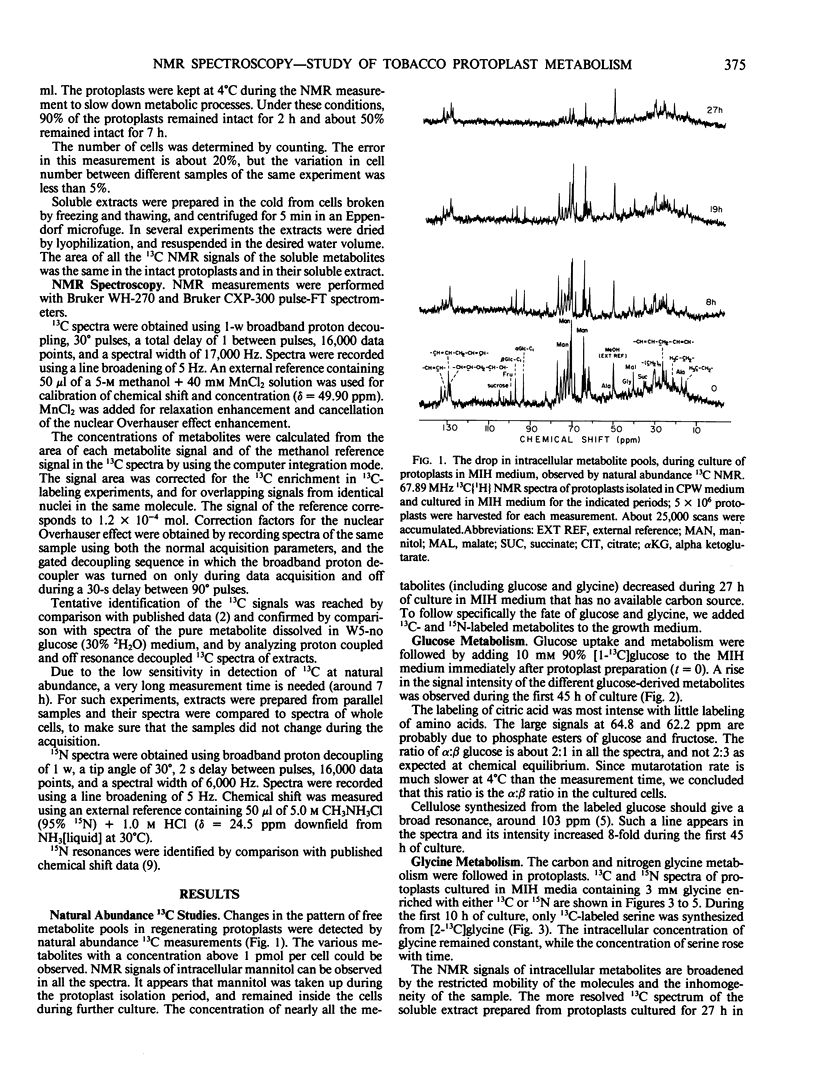
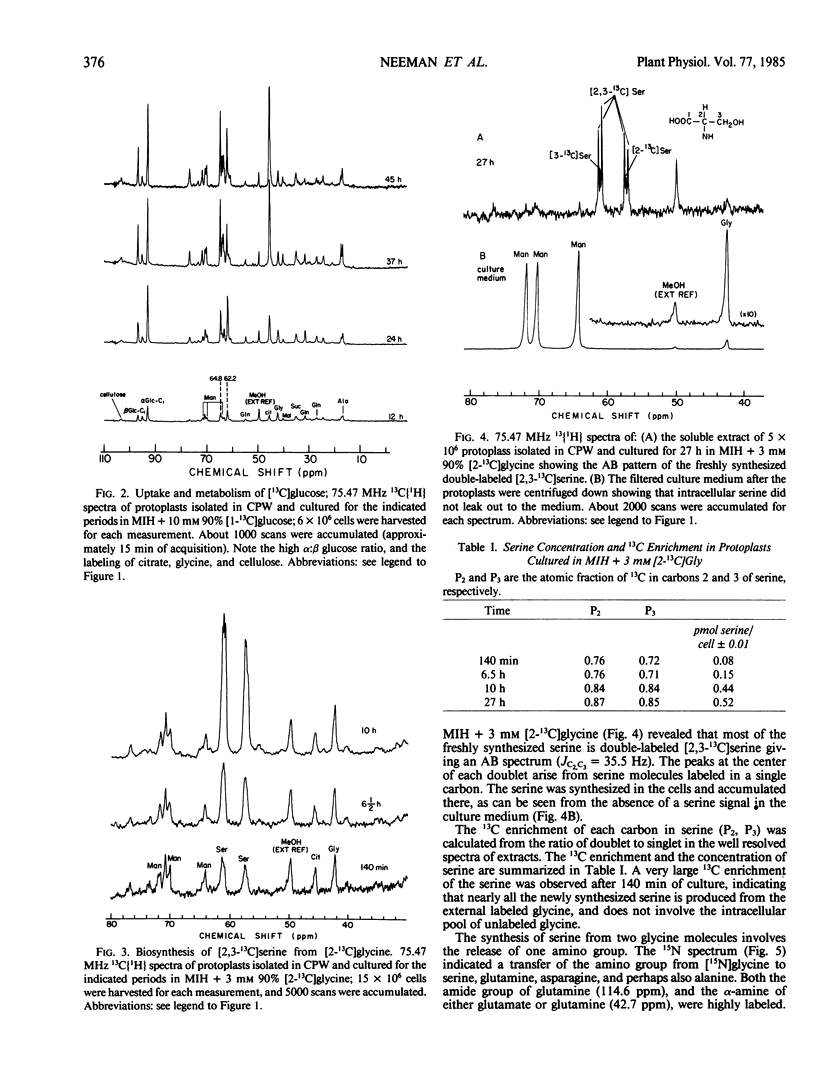
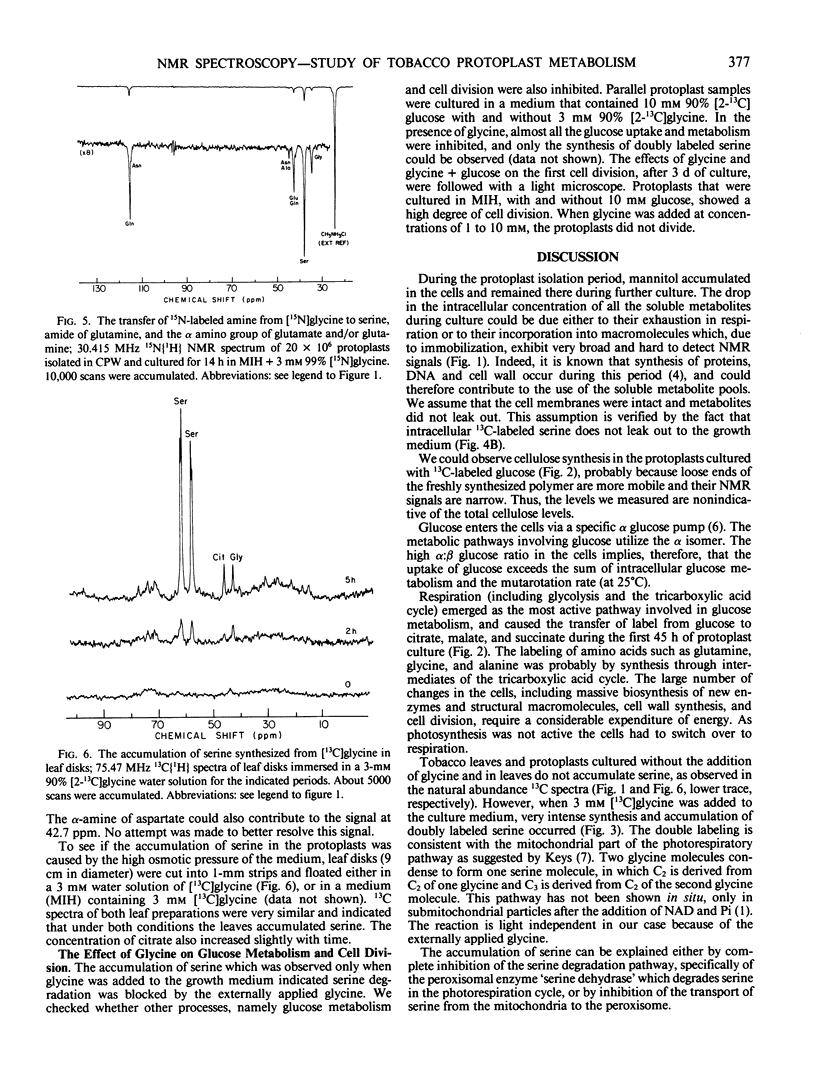
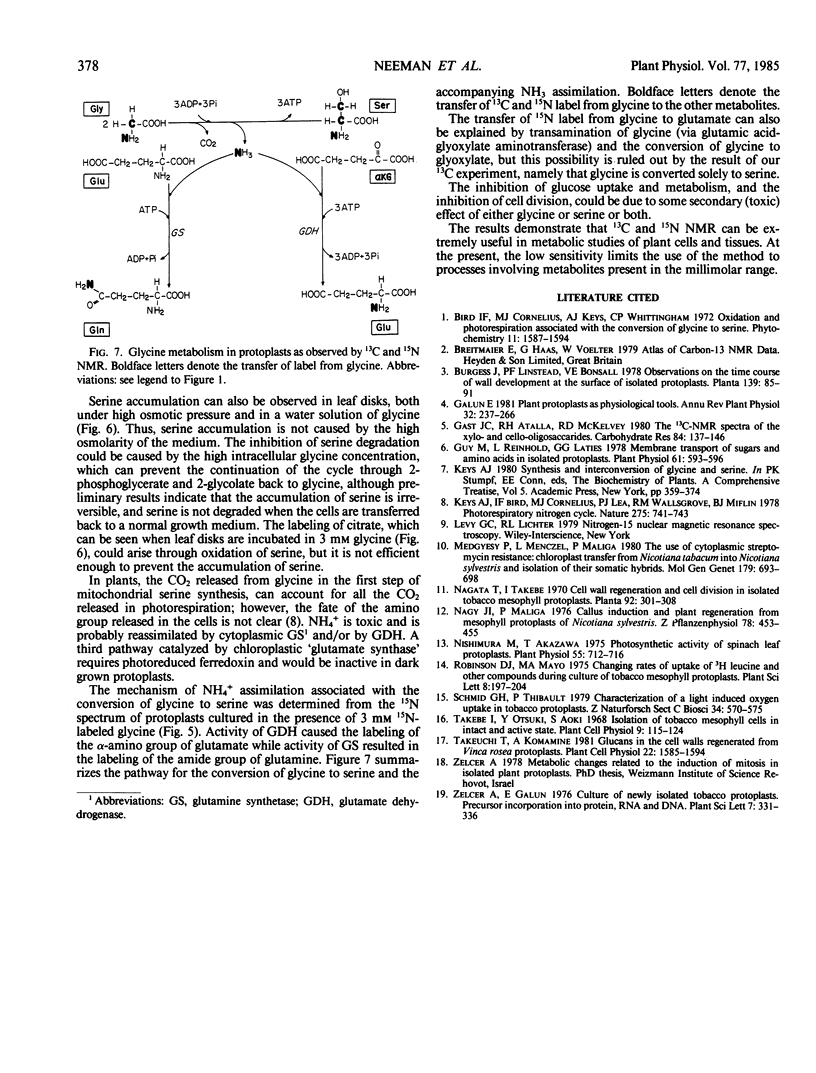
Selected References
These references are in PubMed. This may not be the complete list of references from this article.
- Guy M., Reinhold L. Membrane transport of sugars and amino acids in isolated protoplasts. Plant Physiol. 1978 Apr;61(4):593–596. doi: 10.1104/pp.61.4.593. [DOI] [PMC free article] [PubMed] [Google Scholar]
- Nishimura M., Akazawa T. Photosynthetic activities of spinach leaf protoplasts. Plant Physiol. 1975 Apr;55(4):712–716. doi: 10.1104/pp.55.4.712. [DOI] [PMC free article] [PubMed] [Google Scholar]


